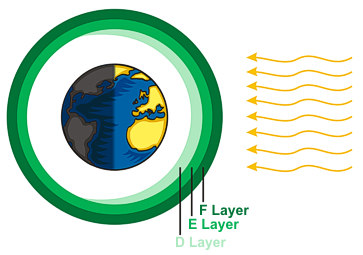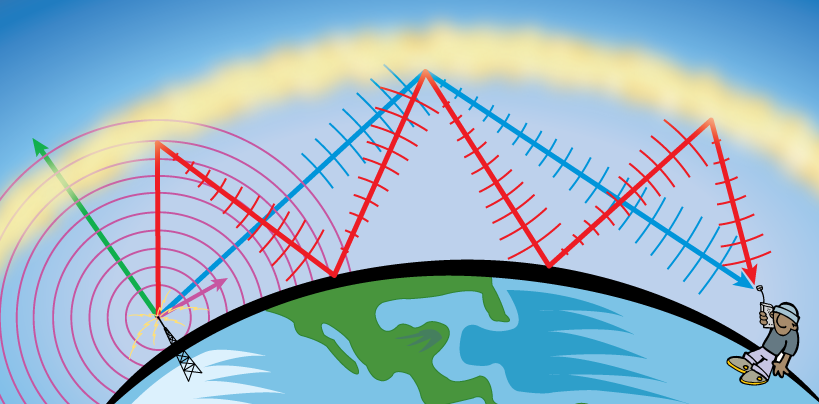
The absorption of radiation in the thermosphere is also responsible for the ionosphere, which is made of electrically charged (ionized) gas particles.
The ionosphere is located within the thermosphere and extends from 37 to 190 miles (60-300 km) above the Earth's surface. It is divided into three regions or layers: the F-Layer, E-Layer, and D-Layer. During the daytime, the F-Layer splits into two layers, then recombines at night.
Since the ionosphere's existence is due to radiation from the sun striking the atmosphere, all three layers are more dense during day. At night, they decrease in density, with the D-Layer essentially disappearing.
The E-Layer was discovered first. In 1901, Guglielmo Marconi transmitted a signal between Europe and North America and showed that it had to bounce off an electrically conducting layer at about 62 miles (100 km) altitude. In 1927, Sir Edward Appleton named that conducting layer the (E)lectrical-Layer. Additional conducting layers discovered later were simply named alphabetically, D and F.
Bouncing radio signals off the Ionosphere is an important quality and what allows radio to reach places all over the world.

Learning Lesson: AM in the PM

